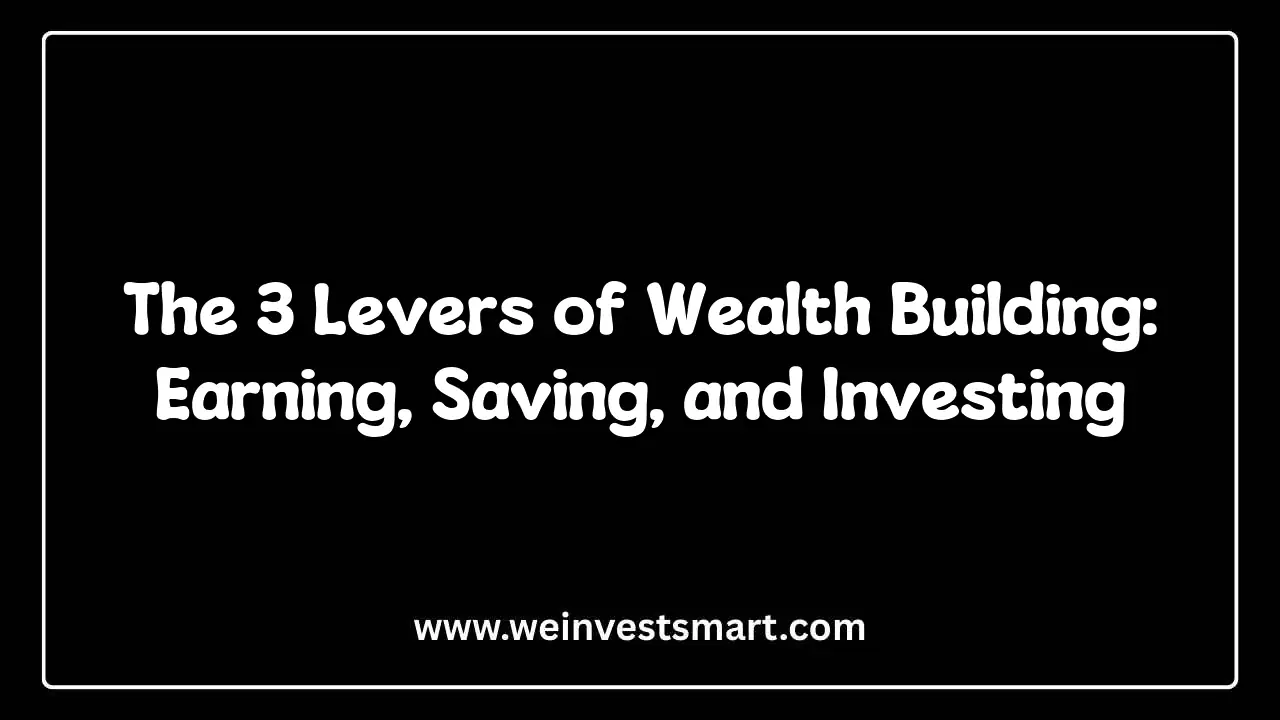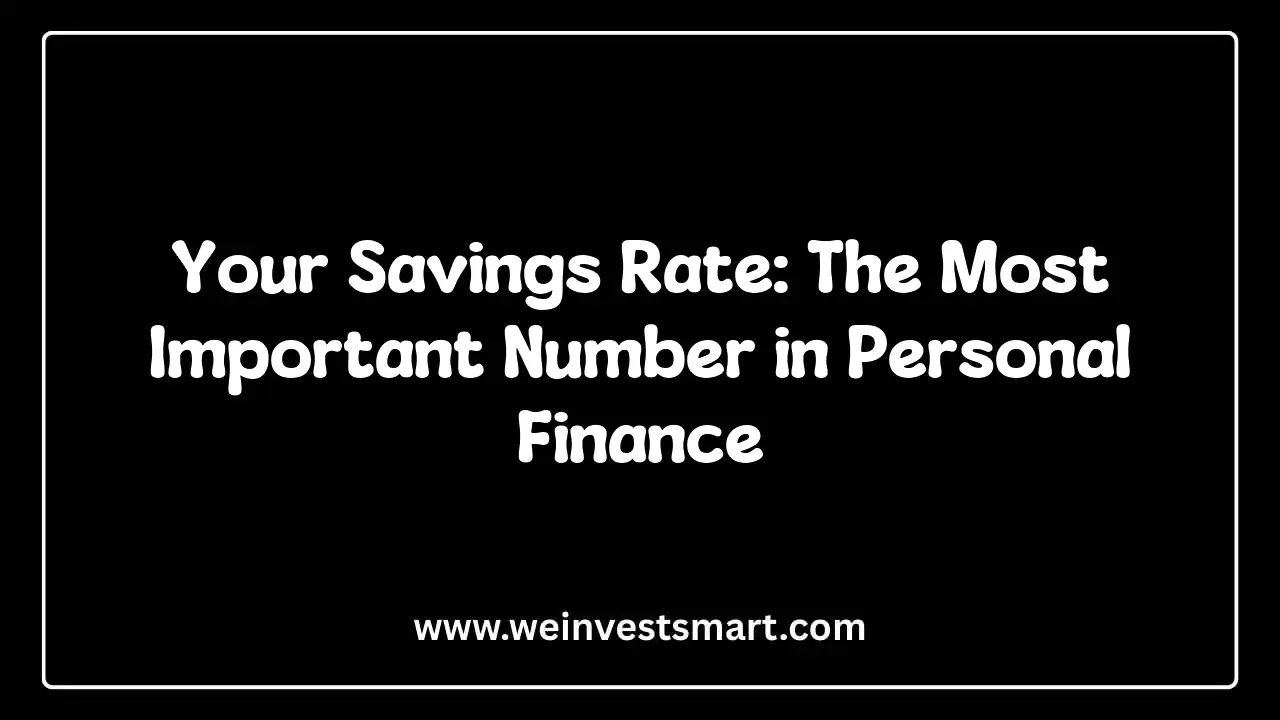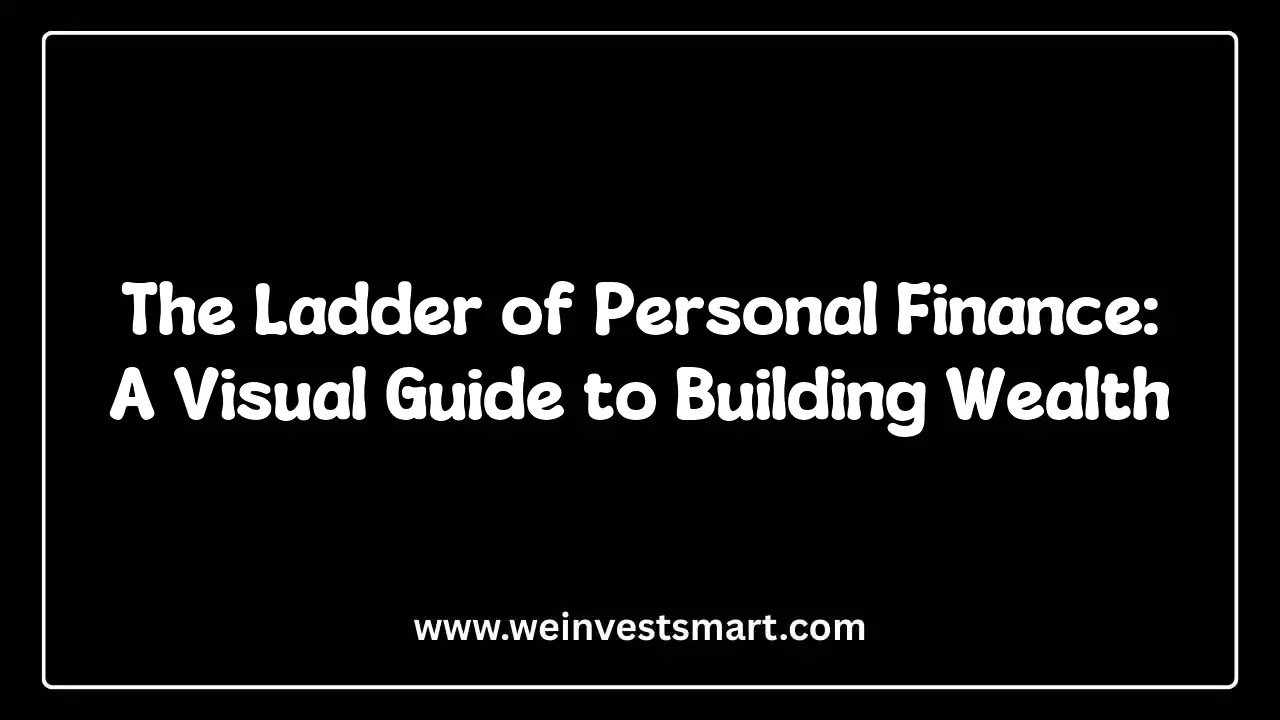· WeInvestSmart Team · wealth-building · 11 min read
How to Build Multiple Income Streams: A Guide for Beginners
Move beyond the 9-to-5. Brainstorm and categorize different types of income streams: active (freelancing, side hustles), passive (dividends, real estate), and portfolio-based. Provide actionable first steps for each.
Most people are living on a financial knife’s edge, and they don’t even realize it. They’ve been taught to follow a script: go to school, get a good job, and climb the corporate ladder. Their entire financial world is built on a single pillar—their 9-to-5 salary. But here’s the uncomfortable truth: a single pillar is a dangerously fragile foundation. One unexpected layoff, one industry disruption, one health crisis, and the entire structure can collapse.
Going straight to the point, relying on a single source of income in the modern economy is an act of blind faith. You are placing 100% of your financial security in the hands of an employer whose loyalty is ultimately to their bottom line, not to you. The problem isn’t the job itself; it’s the complete lack of a financial backup plan.
But what if you could build a system of financial resilience? What if, instead of one pillar, you had three, four, or even five, each one feeding into your wealth and protecting you from shocks? This isn’t some fantasy reserved for the ultra-rich. It’s an accessible strategy called building multiple income streams. And this is just a very long way of saying that it’s time to stop thinking like an employee and start thinking like a CEO of your own financial life.
Why Your Brain Is Wired for a Single Income (And Why It’s Wrong)
Before we can build new streams, we must understand the psychological barrier that keeps us trapped in the single-income mindset. Our brains are wired for simplicity and predictability. The concept of a steady paycheck from a single employer is comforting; it provides a sense of order in a chaotic world. It’s the path of least resistance, a deeply ingrained script from the industrial age that promised security in exchange for loyalty.
The funny thing is, that promise is now largely obsolete. The modern economy is defined by disruption, not stability. Yet, our thinking hasn’t caught up. We cling to the idea of a “safe” job, even as evidence mounts that no job is truly safe. The stress of depending on one source of money creates a scarcity mindset, making it even harder to think creatively about generating more. It’s a vicious cycle: the fear of losing your only income stream paralyzes you from creating new ones.
So, how do you break it? You need to reframe the goal. Building multiple income streams isn’t about frantically juggling three jobs. It’s about strategically creating a diversified financial ecosystem. It’s about building a safety net so robust that the loss of any single stream is an inconvenience, not a catastrophe.
The Three Flavors of Income: Active, Passive, and Portfolio
Alright, enough psychology. Let’s get practical. Not all income is created equal. To build a robust system, you need to understand the three fundamental types of income streams. Each has a different role to play in your financial strategy.
- Active Income: This is the income you work for directly. You trade your time and effort for money. This includes your salary, tips, commissions, and any money you make from freelancing or a side hustle where you are actively providing a service. It’s the foundation of most financial journeys because it’s the most direct way to generate cash flow.
- Passive Income: This is the holy grail for many, but it’s often misunderstood. Passive income is money earned from an asset you own that requires minimal ongoing effort to maintain. Think rental income, royalties from a book, or revenue from an online course. The work is done upfront—building the asset—and then it generates income over time.
- Portfolio Income: This is income generated from your investments. It includes dividends from stocks, interest from bonds or savings accounts, and capital gains from selling an investment at a profit. This is where your money truly starts working for you, generating more money on its own.
You get the gist: Active income builds your initial capital. You then use that capital to buy or create assets that generate Passive and Portfolio income. The ultimate goal is for your passive and portfolio income to grow large enough to cover your living expenses, making active work optional.
Stream Category 1: Active Income — Your Cash Flow Engine
For 99% of people, the journey to multiple income streams begins here. Active income is your power tool for generating the seed capital needed for other streams. Don’t underestimate it. A well-executed side hustle can generate thousands of dollars per year that can be funneled directly into investments.
The Side Hustle: Monetizing Your Skills and Time
A side hustle is simply a flexible way to earn extra money outside of your primary job. The key is to leverage what you already have: skills, knowledge, or spare time.
Freelancing & Consulting: This is the fastest way to get started. You already have marketable skills from your day job—writing, graphic design, project management, accounting, social media management, etc. Platforms like Upwork and Fiverr allow you to offer these services to a global market. You can start with no experience by focusing on small projects to build a portfolio.
- Actionable First Step: Create a profile on Upwork or Fiverr today. Don’t overthink it. Identify one specific skill you have (e.g., “writing blog posts for tech companies”) and create a clear, simple offering. Apply to five small, entry-level jobs this week to get your first review.
The Gig Economy: This involves leveraging platforms that connect you with people who need a specific service. Think food delivery with DoorDash, pet sitting on Rover, or tutoring on platforms like Wyzant. These offer maximum flexibility and have almost zero startup costs. You can work for just a few hours on a weekend and easily make an extra $100-$200.
- Actionable First Step: Sign up for one gig economy app that fits your lifestyle. If you have a car and free evenings, try Uber Eats. If you love animals, create a profile on Rover. Commit to completing just one or two gigs in the next two weeks to prove to yourself how easy it is to generate extra cash.
Stream Category 2: Passive Income — Building Your Freedom Machines
Here’s where things get interesting. Passive income is about building or buying assets that pay you. This requires an upfront investment of either time or money, but the payoff is a revenue stream that isn’t directly tied to the hours you work.
Creating and Selling Digital Products
This is one of the most accessible forms of passive income for beginners because the primary investment is your time and knowledge, not a large sum of money. Digital products can be created once and sold infinitely with no inventory costs.
Ebooks and Guides: Are you an expert on a specific topic? Gardening, knitting, Excel spreadsheets, interview skills? You can write a short ebook or guide and sell it on platforms like Amazon KDP or Gumroad.
- Actionable First Step: Brainstorm three topics you know more about than the average person. Outline a short, 15-20 page guide for one of them. You don’t have to write it all at once, but creating the structure makes the project real.
Online Courses or Workshops: Video is an incredibly powerful medium. You can create a simple online course teaching a skill you have. Platforms like Udemy and Teachable handle all the technical aspects of hosting and payment processing.
- Actionable First Step: Record a short, 5-10 minute “mini-workshop” on your smartphone teaching one specific, simple skill. This demystifies the process and shows you that you can create valuable content without expensive equipment.
Real Estate Investing (The Beginner’s Version)
Owning physical property is a classic path to wealth, but it can be capital-intensive and intimidating for beginners. Luckily, there are easier ways to get started.
- Real Estate Investment Trusts (REITs): This is the single best way for a beginner to invest in real estate. A REIT is a company that owns and operates income-producing real estate (like apartment buildings, malls, or office towers). You can buy shares of a REIT on the stock market just like you’d buy shares of Apple. REITs are legally required to pay out at least 90% of their taxable income to shareholders as dividends, making them a fantastic source of passive income.
- Actionable First Step: Open a brokerage account if you don’t have one. Research a broad, diversified REIT ETF (Exchange-Traded Fund) like VNQ (Vanguard Real Estate ETF). You can start by investing as little as the cost of a single share.
Stream Category 3: Portfolio Income — Making Your Money Work for You
This is the ultimate goal of the wealth-building journey: owning a portfolio of assets that generates enough income to cover all your expenses. This stream is fueled by the capital you generate from your active and passive income streams.
Dividend Stock Investing
When you buy a stock, you’re buying a small piece of a company. Some well-established companies share a portion of their profits with their shareholders in the form of dividends. This is a direct cash payment made to you, typically every quarter, just for owning the stock.
- The Power of Dividend Reinvestment: The true magic happens when you use a Dividend Reinvestment Plan (DRIP). A DRIP automatically uses the dividends you receive to buy more shares of the same stock, often without any commission. This creates a powerful compounding effect: your shares pay dividends, which buy more shares, which then pay even more dividends. It’s a self-perpetuating wealth machine.
- Actionable First Step: Research companies known as “Dividend Aristocrats”—companies in the S&P 500 that have increased their dividend for at least 25 consecutive years. This is a sign of a stable, reliable company. Pick one company that you understand and use (like Coca-Cola or Johnson & Johnson) and buy a small number of shares. Set up a DRIP and watch the compounding begin.
The Bottom Line: This Is More Than Just Extra Money
Building multiple income streams is not just a financial strategy; it’s a fundamental shift in mindset. It’s the tangible proof that you are no longer dependent on a single paycheck for your survival. You are building a fortress of financial resilience, one stream at a time. The feeling of security that comes from knowing you have money arriving from different directions, independent of your boss, is a form of freedom that a salary alone can never provide.
Remember, the goal isn’t to build all of these overnight. The strategy is sequential. Start with one active income stream. Use that cash to build or buy one passive or portfolio income stream. Then repeat. The best time to start was yesterday. The second-best time is today. And this is just a very long way of saying that the next side hustle you start or the first dividend stock you buy isn’t just a small project; it’s the first step toward building your own economy. You get the gist: start now, start small, and give yourself the gift of financial security.
This article is for educational purposes only and should not be considered personalized financial advice. Consider consulting with a financial advisor for guidance specific to your situation.
How to Build Multiple Income Streams FAQ
What are the three main types of income streams?
The three main types of income are Active Income (money earned from a job or service, like a salary or freelancing), Passive Income (earnings from assets that require little ongoing effort, like rental properties or digital products), and Portfolio Income (money from investments like stocks, bonds, and dividends).
Why is it important to have multiple income streams?
Relying on a single income stream, typically a 9-to-5 job, is risky. A job loss can become a financial crisis. Multiple income streams create a safety net, accelerate wealth building, and provide greater financial freedom and security.
What is a good first step for building a second income stream?
For most beginners, the best first step is to start an Active Income stream, such as freelancing or a side hustle. This approach requires minimal upfront capital and allows you to leverage existing skills to generate cash flow quickly, which can then be used to fund more passive income streams.
Can I build passive income with no money?
True passive income (like from rentals or dividends) often requires an upfront investment of capital. However, you can create assets that generate passive income with a primary investment of time. For example, writing an ebook, creating an online course, or building a blog can generate revenue passively after the initial creation and marketing efforts.
How do active and passive income work together?
The ideal strategy is to use your high-effort Active Income (from your main job and side hustles) to generate the capital needed to buy or create Passive and Portfolio Income streams. Over time, the goal is for your passive and portfolio income to grow large enough to cover your living expenses, making active work optional.



